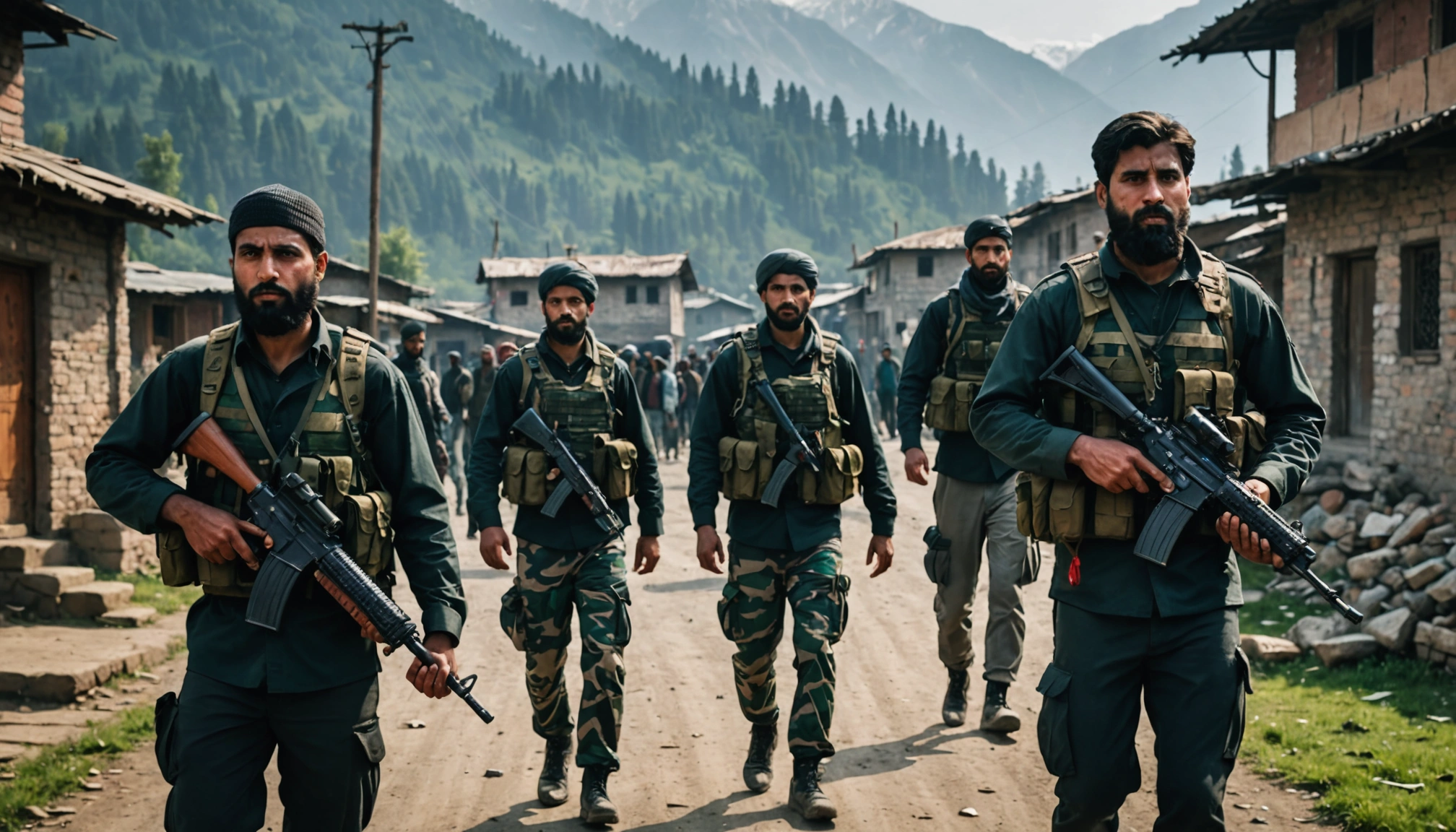Kashmir Insurgency: A Deep Dive into Militant Groups and Regional Tensions

The Kashmir insurgency, a decades-long conflict in the disputed region of Jammu and Kashmir, continues to be a major flashpoint between India and Pakistan. Sparked by political disenfranchisement and fueled by separatist sentiments, the insurgency has evolved over the years, involving numerous militant groups with varying ideologies and objectives. This article examines the key militant groups involved, the historical context of the insurgency, and the implications for regional stability.
Origins and Escalation
The insurgency in Jammu and Kashmir can be traced back to the late 1980s. A series of demonstrations, strikes, and attacks on the Indian government in July 1988 marked its beginning, escalating into a severe security issue for India in the 1990s. The roots of the conflict are tied to a dispute over local autonomy and self-determination. A catalyst for the insurgency was a disputed election in 1987, which led to some legislative assembly members forming armed insurgent groups.
Pakistan, with whom India has fought three major wars over the Muslim-majority region, has officially claimed to provide only "moral and diplomatic" support to the separatist movement. However, India and the international community have accused Pakistan's Inter-Services Intelligence (ISI) of supporting and supplying arms, as well as providing training to militant groups in Jammu and Kashmir. Former Pakistani President Pervez Musharraf admitted that the Pakistani state supported and trained insurgent groups in Kashmir throughout the 1990s.
Key Militant Groups
Several militant groups have been involved in the Kashmir insurgency, each with its own objectives and strategies. Some of the most prominent include:
-
Jammu and Kashmir Liberation Front (JKLF): Initially the most prominent militant group, the JKLF advocated for the secession of Jammu and Kashmir from India. However, it has since become less effective, focusing on propagating its cause through other means. The JKLF was the first militant group to advocate for secession of J&K from India. From the time of its inception till 1988, the JKLF focussed on propagating its secessionist cause, and building its militant base through indoctrination and arms training.
-
Hizbul Mujahideen (HM): A radical Islamic group that supports Kashmir's merger with Pakistan. The HM has been designated as a terrorist organization by the United States, the European Union, and India.
-
Lashkar-e-Taiba (LeT): A Pakistan-based terrorist organization that has been responsible for numerous attacks in India, including the 2008 Mumbai attacks. LeT aims to unite Kashmir with Pakistan.
-
Jaish-e-Mohammed (JeM): Another Pakistan-based group that has carried out several attacks in Kashmir, including the 2019 Pulwama attack, which killed 40 Indian paramilitary soldiers. The JeM maintains training camps in Afghanistan and has close ties to the Taliban and Al-Qaeda.
-
The Resistance Front (TRF): A relatively new group that emerged in 2019, TRF is believed to be an offshoot of Lashkar-e-Taiba. It has claimed responsibility for several attacks, including the recent Pahalgam attack in April 2025, which killed at least 26 people.
Other militant groups that have been active in the region include Al-Badr, Harkat-ul-Mujahideen (HUM), and various foreign mercenary groups.
Impact on Civilians and Security Forces
The Kashmir insurgency has resulted in a large number of casualties, including civilians, security forces, and militants. According to government data, around 41,000 people have died because of the insurgency as of March 2017, with most deaths occurring in the 1990s and early 2000s. Non-governmental organizations claim a higher death toll.
The insurgency has also led to the large-scale migration of non-Muslim minority Kashmiri Hindus out of the Kashmir Valley. Between 1989 and 1991, over 350,000 Kashmiri Pandits were ethnically cleansed from the Valley in a campaign of targeted killings, rape, threats, and destruction of properties and religious sites.
Indian security forces have conducted various operations to control and eliminate insurgency in the region, such as Operation Rakshak, Operation Sarp Vinash, and Operation All Out. These operations have led to the death of many militants and the uncovering of militant hideouts. However, they have also been implicated in reports of human rights abuses, including extrajudicial killings, enforced disappearances, and torture.
Recent Developments and Current Situation
In recent years, the Indian government has intensified its counter-insurgency operations in the region. In August 2019, the special status of Jammu and Kashmir was revoked, and the Indian Army intensified its operations. In June 2020, Doda district was declared militancy-free, while Tral was declared free from Hizbul Mujahideen militants.
However, sporadic attacks and clashes continue to occur. The recent Pahalgam attack in April 2025, which killed at least 26 people, has heightened tensions between India and Pakistan. India has accused Pakistan of backing the attack, while Pakistan has denied any connection.
The situation remains tense, with frequent reports of ceasefire violations along the Line of Control (LoC) and ongoing search operations by security forces to track down militants.
Regional Implications
The Kashmir insurgency has significant implications for regional stability. The conflict between India and Pakistan over Kashmir has led to three major wars and several other armed skirmishes. The presence of militant groups in the region, some of which have links to international terrorist organizations, poses a threat to regional and global security.
The international community has called on India and Pakistan to resolve the Kashmir dispute through peaceful means and to take steps to prevent further escalation of violence. However, progress towards a resolution has been slow, and the situation remains volatile.
Conclusion
The Kashmir insurgency is a complex and multifaceted conflict with deep historical roots and significant regional implications. The involvement of various militant groups, the ongoing dispute between India and Pakistan, and the human rights abuses committed by both sides have contributed to the protracted nature of the conflict. A lasting solution will require a comprehensive approach that addresses the underlying political, economic, and social grievances of the Kashmiri people, as well as a commitment from India and Pakistan to resolve their differences through peaceful dialogue and cooperation.
Related Articles


